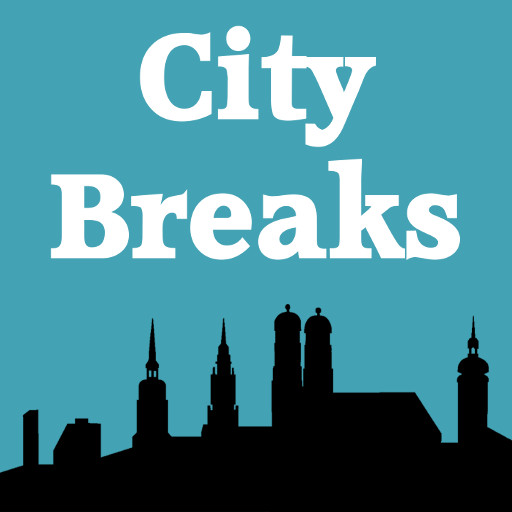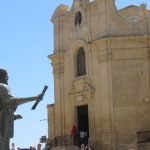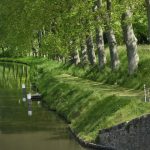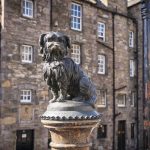Dante’s Florence? It’s complicated! The poet Dante Alighieri, born in Florence in 1265, is to Italy what Shakespeare is to the UK: he wrote some of his country’s greatest literary works, represents its culture and is, still today, much-quoted and an influence on the language people speak. In the 13th century, the city of Florence exiled Dante when he found himself on the ‘wrong’ side in fierce political battles, but today it is hugely proud of him. This post takes you around Dante’s Florence and explains where to ‘find’ him in the city today.
around the duomo
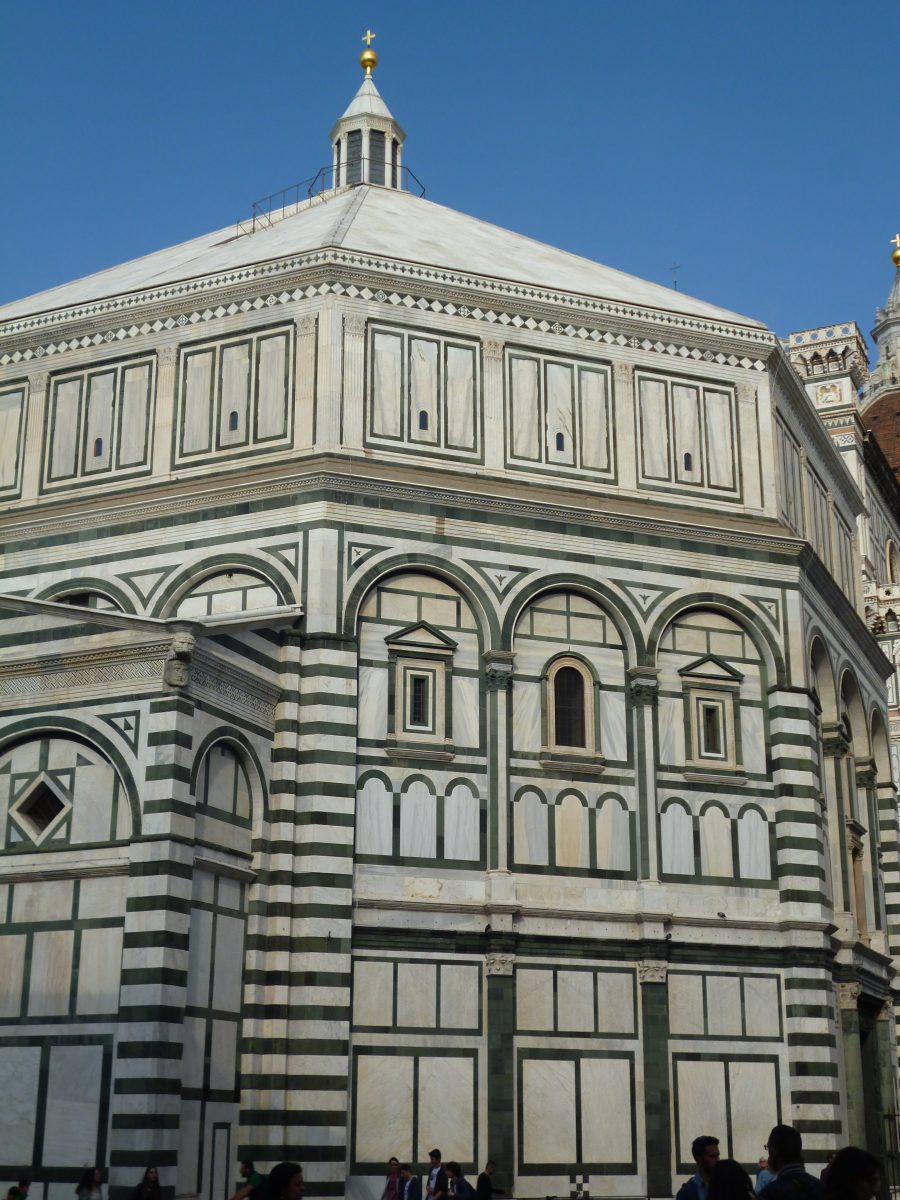

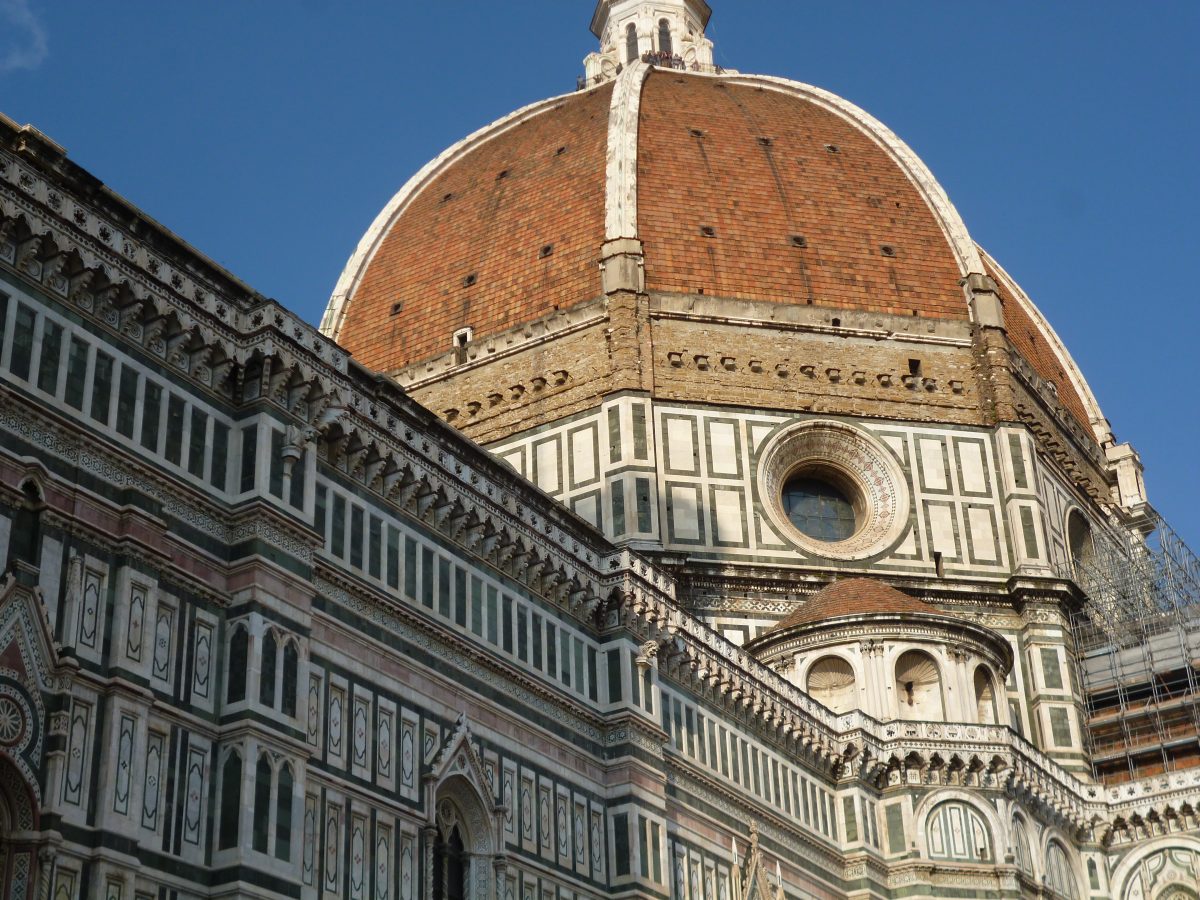
During Dante’s lifetime, Florence cathedral was under construction and he loved to sit nearby to watch the builders at work. There is a plaque marked ‘Sasso di Dante’ (Dante’s seat) marking his favourite spot at the end of Via dello Studio. He was baptised in the Baptistery in the Piazza del Duomo and he remembered this building longingly during all his years in exile. He wrote of his dream of being invited back to be crowned there with a laurel wreath, the symbol of poetic excellence which had been used in ancient times. Sadly for Dante, this never happened, even though portraits of him show him wearing it.
Just nearby is the Via Dante Alghieri, the road where he lived. Look out for the medieval buildings he knew, still there today, such as the Torre della Castagna (Chestnut Tower) and the tiny church of San Martino, built in the 10th century. Dante’s family owned several houses in this street and one of them is today the Dante Museum, where you can see exhibits on his life, portraits of him and copies of his most famous work, the Divine Comedy.
santa margherita dei cerchi
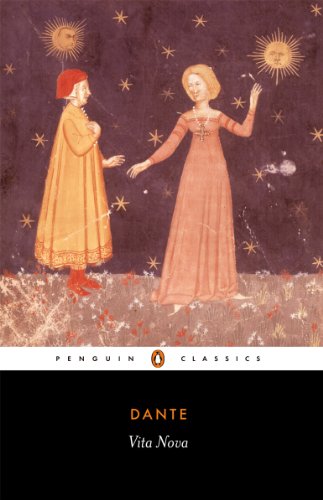
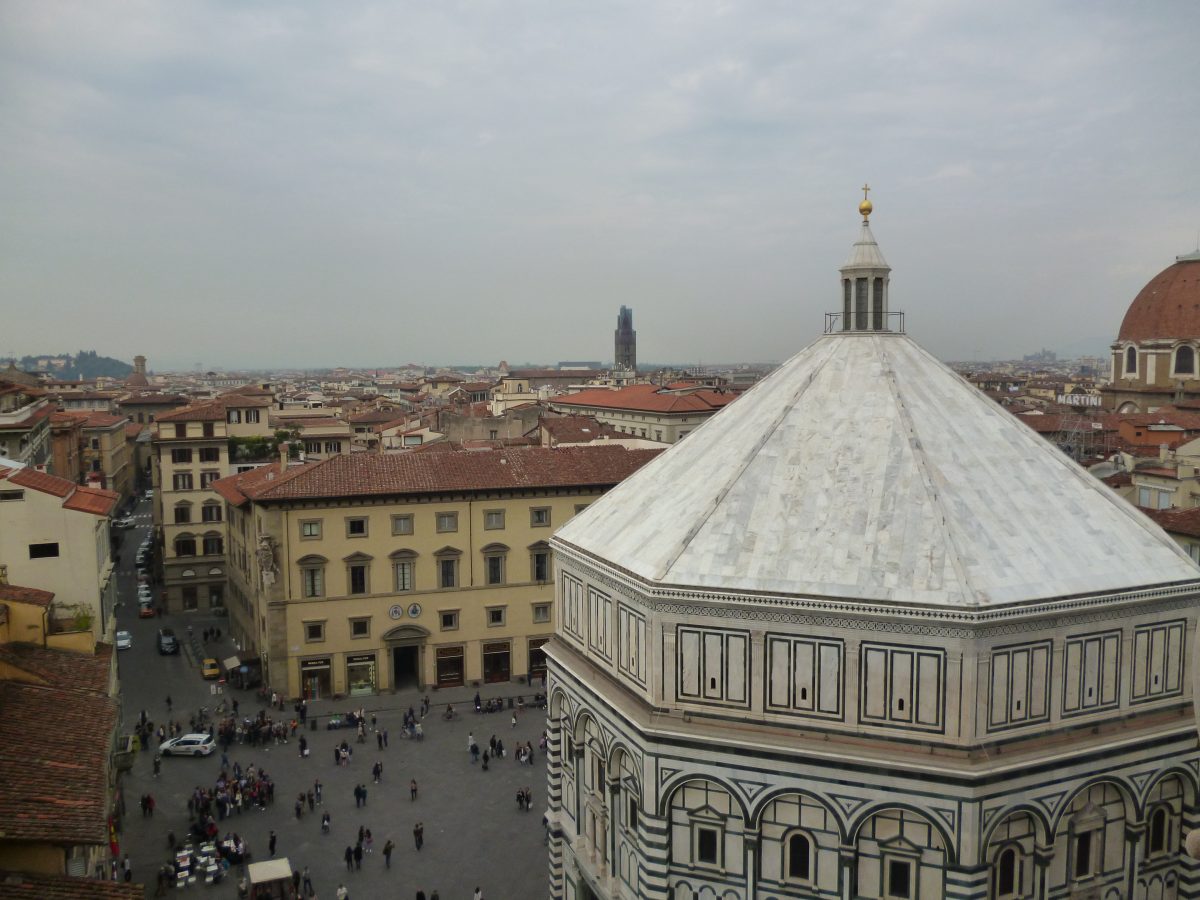
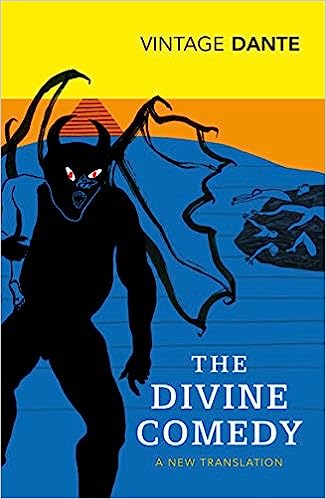
The little church of Santa Margherita dei Cerchi, also near the cathedral, is poignantly connected to Dante. It was here that he first saw Beatrice, the girl whom he never forgot and around whom much of his writing centred. They were both only nine at the time, and are thought to have met only once more, but she became for Dante the ‘perfect’ woman, beautiful, spiritual and pure. He dedicated his love poetry to her in ‘La Vita Nuova’ and in the Divine Comedy it is Beatrice who guides the pilgrim to heaven.
Beatrice’s father, Folco Portinari, is buried here, but it is thought more likely that her remains lie elsewhere, beside those of her husband in the Bardi family tomb. Nevertheless, there is a shrine to her here where people still leave flowers and letters to Beatrice, sometimes pleading with her for help in their own love lives. It’s a curious twist that this was also the parish church of Dante’s future wife Gemma Donati and so it was here that they married.
artworks connected to dante
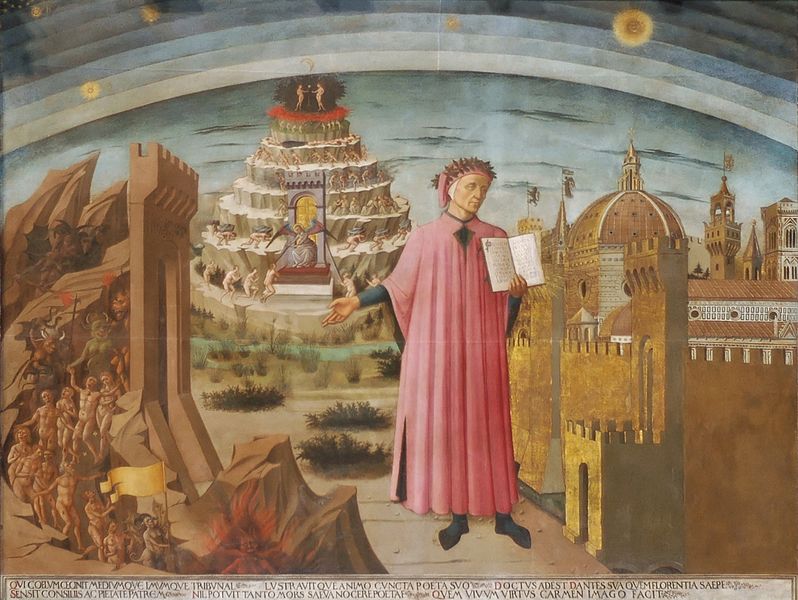
There are a number of paintings based on Dante’s most famous work in Florence. Best known is Domenico Michelino’s ‘Dante explaining the Divine Comedy’ which hangs in the cathedral and is described in a previous post. It was painted in 1465, long after Dante’s exile and death and reminds us that the city which shunned him became very keen to promote him in later centuries. In the chapel of the Bargello, formerly a court and prison where Dante was tried and sentenced to exile, there is a portrait showing Dante in paradise, part of a Giotto fresco. And in the Strozzi Chapel at Santa Maria Novella, there is a fresco depicting paradise and hell, based on his work.
in memoriam
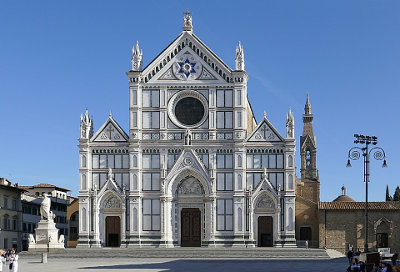

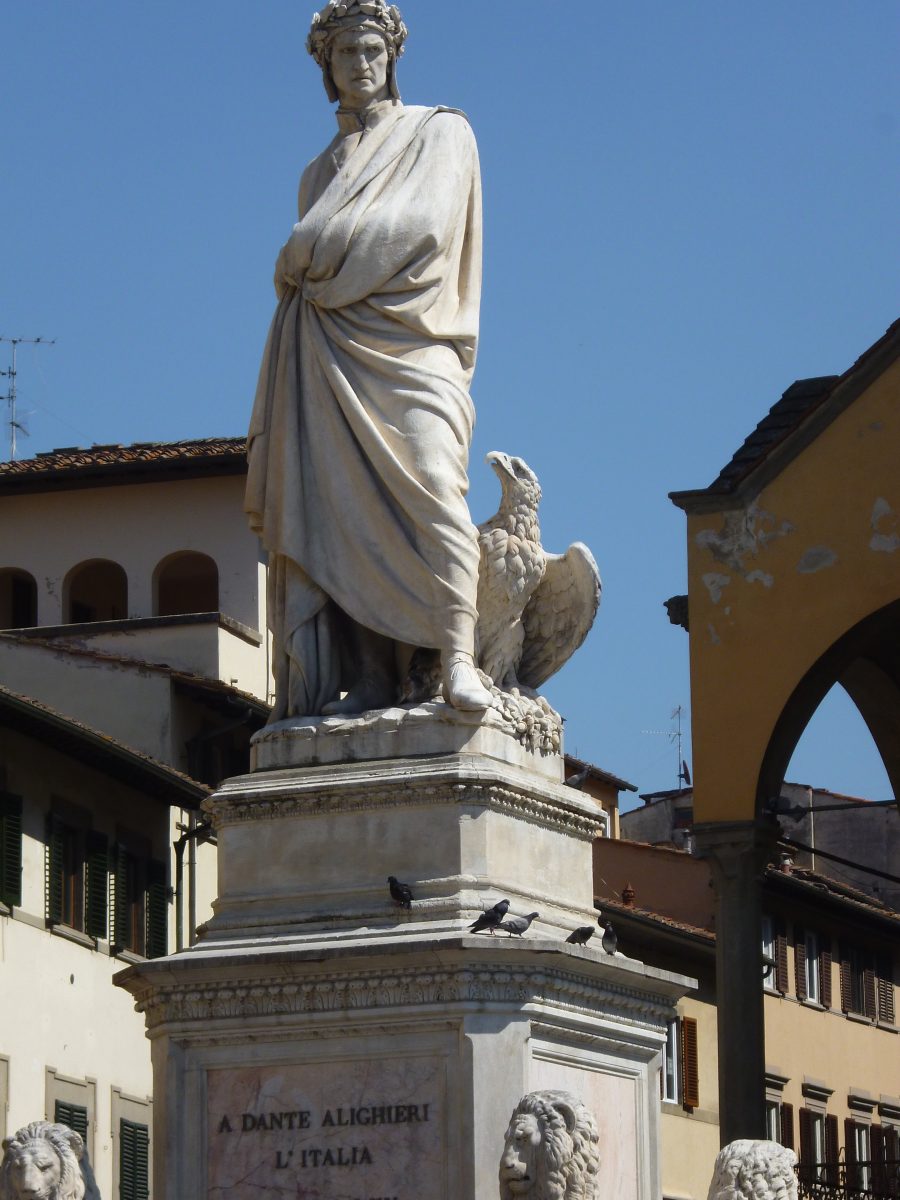
Dante died in exile and was buried in Ravenna. Pleas from the Florentine authorities to return his remains to Florence have always been ignored. So, the city has found other ways to memorialise him. At the Palazzio Vecchio, where Dante took part in city assemblies, you can see his death mask. Inside Santa Croce, in the Buonarroti Chapel, there is a monument to Dante, decorated with a quotation from the Divine Comedy: ‘Onorate l’altissimo poeta’ (the greatest poet honoured)
And in the piazza outside Santa Croce, prominently to the left of the main façade, stands a statue of Dante. It was erected in 1865, to commemorate the 600th anniversary of his birth and had been carved – oh, irony! – by a sculptor from Ravenna, the city where Dante is buried. It is thought that in erecting the statue here, Florence was accepting that the battle to have the poet’s remains returned had been lost. The ‘tomb’ inside Santa Croce is empty, but Dante stands proud outside, reminding all of his connection to the city where he was born.
more on dante
It is impossible to overstate Dante’s importance, in Florence and in Italy. His Divine Comedy was widely read all over Europe and many of its images, such as his descriptions of ’the 8 circles of hell’, peopled by ‘gluttons, blasphemers … and usurers’ are unforgettable. Everybody knows the phrase ‘Abandon hope, all who enter here’, even if they don’t know that Dante wrote it as the inscription over his version of hell.
Not only is Dante seen as a major influence on European literature, he is also the father of the modern Italian language. He chose to write not in Latin – as other authors of his time did – but in the Tuscan dialect which he, and other Florentines actually spoke. That made his work much more widely read and gradually the language he used became the tongue of Italians more generally. Today, people refer to the Italian language as ‘the language of Dante’
There is much more about Dante, his connection to Florence and his writings, including some short extracts, on the podcast.
Listen to the POdcast
Reading suggestions
The Divine Comedy by Dante Alghieri
Dante The Poet, the Political Thinker, the Man by Barbara Reynolds
links for this post
Dante Museum
Santa Margherita dei Cerchi
Santa Croce
Previous post Exploring the Area around Florence Cathedral
Next post Santa Croce
Last Updated on November 21, 2024 by Marian Jones
